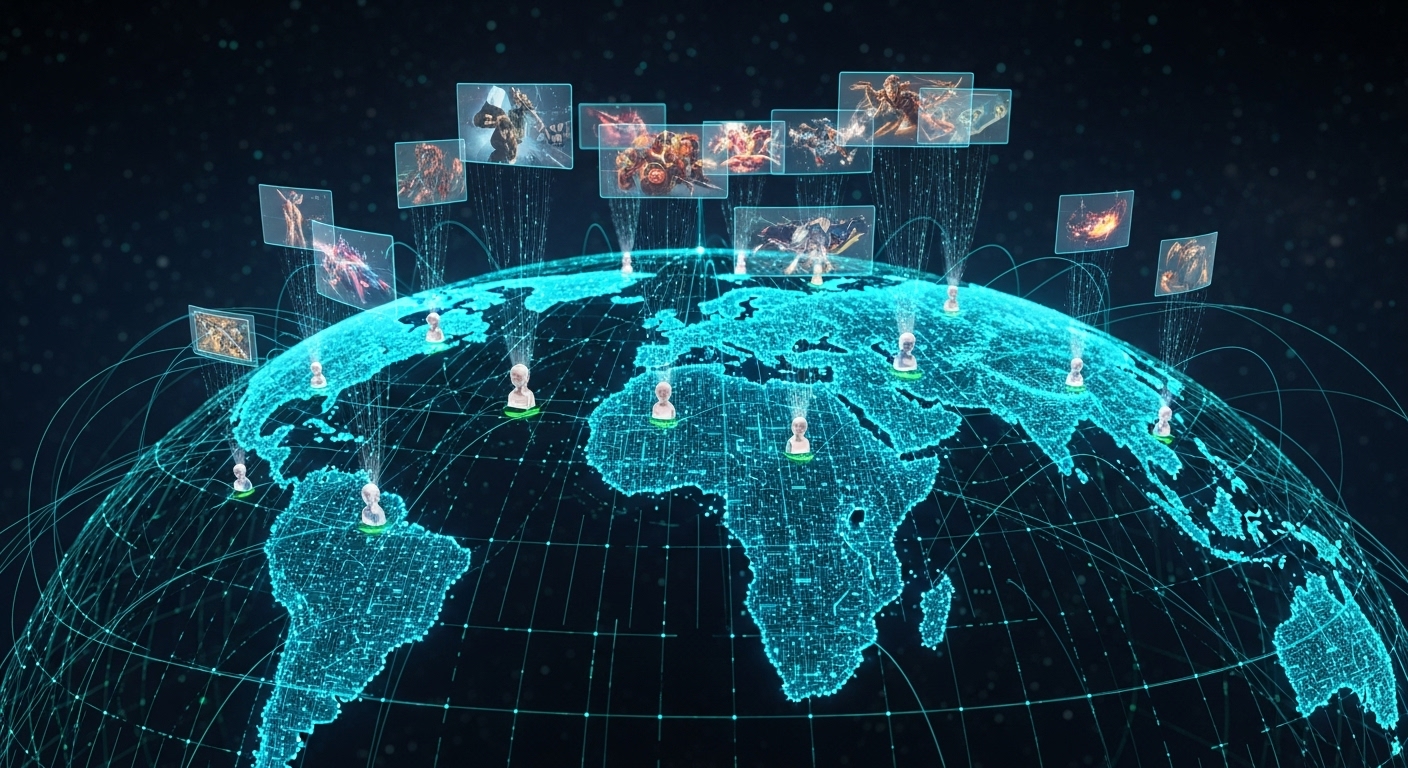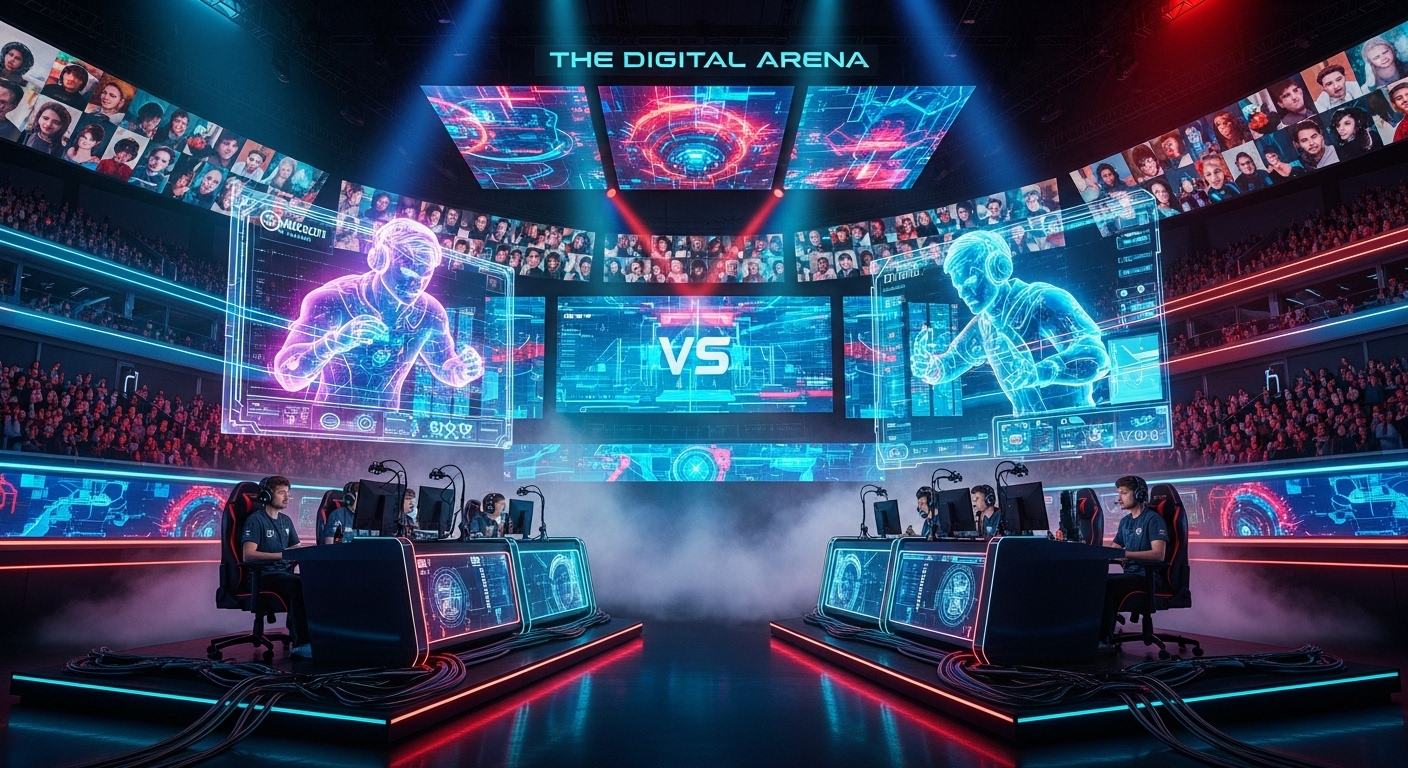Introduction
Esports has evolved from small local LAN events into a global entertainment powerhouse, rivaling traditional sports in scale, audience reach, and prize money. What began as informal gatherings of passionate gamers has transformed into grand spectacles filling stadiums and watched by millions worldwide. Today, esports tournaments stand among the most-watched live events on the planet, combining athletic intensity, digital innovation, and fan engagement on an unprecedented level.
The largest esports tournaments in history have not only shaped the competitive gaming landscape but have also helped define the identity of modern esports. They represent moments when games transcended their screens, uniting global communities under one competitive stage. These tournaments showcase the growth of gaming as both an industry and a cultural phenomenon.
In this blog, we’ll explore the biggest esports tournaments ever held — the ones that broke viewership records, awarded jaw-dropping prize pools, and elevated esports into mainstream recognition.
The Birth of Esports Tournaments
Before diving into the largest tournaments in history, it’s important to understand how the concept of esports competition evolved. The earliest recorded video game tournament dates back to 1972, when students at Stanford University competed in Spacewar! for a year’s subscription to Rolling Stone. The event was small but historic, laying the foundation for competitive gaming culture.
In the 1980s and 1990s, gaming competitions grew slowly through arcade challenges and early console tournaments. The real revolution began with the rise of online multiplayer games in the early 2000s. Titles like Counter-Strike, StarCraft, and Warcraft III created communities that thrived on competition.
However, it wasn’t until the 2010s that esports exploded globally, driven by streaming platforms, corporate sponsorships, and international leagues. Events such as The International in Dota 2 and the League of Legends World Championship began offering multi-million-dollar prize pools and stadium-level production.
These tournaments became annual celebrations of skill, storytelling, and community — the Super Bowls of the digital era.
The International: Dota 2’s Crown Jewel
The Beginning
When Valve launched the first Dota 2 International in 2011, it set a new standard for esports prize money. The inaugural event, held in Cologne, Germany, featured 16 teams and an unprecedented $1.6 million prize pool — fully funded by Valve. It was one of the first esports tournaments to be broadcast live in multiple languages and to attract global attention.
The Rise of Crowdfunding
From 2013 onward, The International introduced a unique funding system using the Compendium, allowing fans to contribute directly to the prize pool through in-game purchases. This model revolutionized esports financing, enabling the community to boost rewards to astronomical levels.
The Record-Breaking Years
Each year, The International has surpassed itself in scale and impact. In 2019, The International 9 (TI9) in Shanghai made history with a total prize pool of over $34 million, the largest ever in esports history at that time. The champions, OG, took home more than $15 million — the biggest single payout to a team in competitive gaming.
Even in subsequent years, despite global challenges, The International has continued to draw enormous audiences and define what a world championship in esports can be.
Why It Stands Out
The International is not just a tournament; it’s an event of cultural significance in gaming. Its presentation, storytelling, and emotional depth make it a defining moment for players and fans alike. The combination of community-driven funding, global participation, and cinematic production ensures its place as one of the largest and most iconic esports tournaments in history.
League of Legends World Championship
The Global Phenomenon
If The International represents financial dominance, the League of Legends World Championship (Worlds) represents global reach and cultural impact. Hosted annually by Riot Games, Worlds brings together the best teams from every major region — North America, Europe, Korea, China, and more — for a month-long tournament culminating in a grand final watched by millions.
Viewership Records
The 2023 League of Legends World Championship shattered previous records, drawing over 6.4 million concurrent viewers during the final between T1 and Weibo Gaming. This made it one of the most-watched esports events of all time.
Each year, Worlds raises the bar for production value, featuring elaborate opening ceremonies, musical performances, and stunning visuals — including augmented reality shows and virtual performers.
Cultural Influence
Unlike many esports tournaments that cater to niche audiences, Worlds has achieved true mainstream penetration. Its global tours have taken it from Seoul to Paris, Shanghai to Los Angeles. Riot Games’ commitment to storytelling — crafting rivalries, underdog arcs, and emotional moments — has made Worlds a must-watch event, even for casual fans.
Prize Pools and Prestige
While its prize pool, typically around $2 million to $3 million, may not match The International’s enormous figures, the League of Legends World Championship remains arguably the most prestigious tournament in esports due to its sheer popularity and brand power.
Fortnite World Cup
A New Challenger Enters
In 2019, Epic Games shocked the world with the Fortnite World Cup, bringing the colorful, fast-paced world of Fortnite into the competitive spotlight. Despite being a relatively new game, Fortnite’s popularity and accessibility made its first global tournament an instant phenomenon.
The $30 Million Prize Pool
Held at the Arthur Ashe Stadium in New York City, the Fortnite World Cup featured a $30 million total prize pool, one of the largest in esports history. The solo champion, 16-year-old Kyle “Bugha” Giersdorf, took home $3 million, instantly becoming a global icon.
Global Participation
The tournament attracted millions of participants through online qualifiers, making it one of the most inclusive events ever. Players from all corners of the world had a chance to qualify, showcasing esports’ ability to transcend geography, language, and background.
A Blend of Entertainment and Competition
What set the Fortnite World Cup apart was its fusion of entertainment and sport. With celebrity appearances, live performances, and a carnival-like atmosphere, Epic Games turned the event into a celebration of gaming culture.
Although the COVID-19 pandemic prevented subsequent editions, the Fortnite World Cup remains one of the most iconic and lucrative esports tournaments ever held.
PUBG Global Championship
From Battle Royale to Esports Mainstay
PlayerUnknown’s Battlegrounds (PUBG) popularized the battle royale genre, and its global tournaments quickly followed. The PUBG Global Championship (PGC) represents the pinnacle of competitive PUBG, bringing together the best squads from regional leagues.
The Scale of the Competition
The PGC 2019 featured a $4 million prize pool, hosted in Oakland and California, setting a standard for the battle royale scene. Its success demonstrated that large-scale battle royale competitions were viable and could rival traditional esports formats in both intensity and entertainment value.
Evolution of the Format
In subsequent years, PUBG’s competitive scene has matured, featuring seasonal leagues, online qualifiers, and partnerships with global sponsors. The PGC remains one of the most-watched events in shooter esports, continuing to push production and strategic gameplay to new levels.
CS:GO Majors: The Legacy of Counter-Strike
A Timeless Esport
Few esports titles have aged as gracefully as Counter-Strike. Since the early 2000s, Counter-Strike has remained a cornerstone of competitive gaming. The introduction of CS:GO Majors in 2013 marked the beginning of a new era for the franchise.
The Major System
Each year, Valve sponsors multiple Major Championships, hosted by different tournament organizers. These events feature the world’s best teams and offer prize pools ranging from $1 million to $2 million.
While the prize money may not always reach the astronomical levels of other esports, the CS:GO Majors have unparalleled historical prestige. Winning a Major is one of the greatest achievements a professional player can aspire to.
PGL Major Stockholm 2021
The PGL Major Stockholm 2021 was particularly historic, boasting over 2.7 million concurrent viewers — the highest ever recorded for a CS:GO event. The atmosphere, crowd energy, and storylines solidified it as one of the greatest esports tournaments ever staged.
The Enduring Appeal
The success of the Major system lies in its authenticity. It celebrates skill, teamwork, and tactical brilliance without unnecessary gimmicks. Each Major adds to the rich legacy of Counter-Strike, proving that quality competition never goes out of style.
Overwatch World Cup
A Celebration of Nations
The Overwatch World Cup, organized by Blizzard Entertainment, is one of the most unique esports tournaments in history. Unlike most competitions centered on clubs or organizations, the Overwatch World Cup features national teams, giving it a patriotic flavor similar to the Olympics.
Global Participation and Production
Launched in 2016, the Overwatch World Cup quickly gained attention for its international diversity and stunning production. Fans around the world rallied behind their countries, creating a sense of pride rarely seen in esports.
The 2018 edition, held during BlizzCon, featured teams from 24 nations and was broadcast in multiple languages. The United States, South Korea, and China have all played key roles in shaping its competitive narrative.
Legacy
While the Overwatch League focuses on city-based franchises, the World Cup remains a fan-favorite event celebrating global unity through gaming. Its large viewership, high production value, and inclusive spirit earn it a place among esports’ most significant tournaments.
The Evolution Championship Series (EVO)
The Heart of Fighting Games
No list of major esports tournaments would be complete without EVO, the Evolution Championship Series. Established in 1996, EVO is the longest-running fighting game tournament in the world.
It serves as the spiritual home for titles such as Street Fighter, Tekken, Mortal Kombat, and Super Smash Bros. Each year, thousands of competitors gather in Las Vegas to determine who stands atop the fighting game community.
Cultural Significance
EVO is more than just a competition — it’s a celebration of gaming culture and diversity. Anyone, from professionals to casual players, can enter. The open-bracket format and the electric energy of the crowd make EVO one of the most inclusive and emotional events in esports.
Iconic Moments
Over the years, EVO has produced some of esports’ most memorable moments. “EVO Moment 37,” when Daigo Umehara executed a legendary parry sequence in Street Fighter III, remains one of the most replayed clips in gaming history.
While its prize pools are smaller compared to other esports, the cultural impact of EVO is immeasurable, securing its place as one of the greatest tournaments ever.
Call of Duty League Championships
From Console to Global Stage
Call of Duty has long been one of the most popular franchises in gaming, and its competitive scene reflects that. The Call of Duty League (CDL) Championship represents the peak of professional competition for the franchise.
High Stakes and High Drama
With prize pools often exceeding $5 million, the CDL Championship attracts the best players from around the world. Its 2020 Grand Finals saw Atlanta FaZe and Dallas Empire clash in one of the most thrilling matches in series history.
Production and Audience
The combination of cinematic storytelling, production value, and fan loyalty has made the CDL Championships a cornerstone event for console esports. Each year, millions tune in to witness rivalries unfold and legends rise.
Valorant Champions
The New Generation
Riot Games’ Valorant quickly became one of the fastest-growing esports titles after its release in 2020. Its global competitive circuit culminates in Valorant Champions, an annual tournament that crowns the best team in the world.
Rapid Growth
Despite being a young esport, Valorant has already hosted tournaments with multi-million-dollar prize pools and global participation. The 2023 Valorant Champions event in Los Angeles recorded record-breaking viewership, signaling the rise of a new titan in esports.
The Future of Tactical Shooters
With its combination of tactical gameplay and character abilities, Valorant has carved its own identity. The success of its championship events suggests that it may soon rival traditional giants like CS:GO in both scale and legacy.
Common Threads Among the Largest Esports Tournaments
Across all these tournaments — from The International to Valorant Champions — several key elements define their success.
- Massive Prize Pools: Money attracts top talent and raises the stakes, drawing fans who love high-pressure competition.
- Global Accessibility: Online qualifiers and regional representation ensure worldwide participation.
- High Production Value: From lighting and stage design to music and commentary, esports tournaments have become entertainment spectacles.
- Emotional Storytelling: Narratives of rivalries, underdogs, and redemption arcs captivate audiences.
- Community Engagement: Esports thrives on its fans. The biggest tournaments succeed because they involve communities through crowdfunding, fan voting, and interactive features.
The Future of Mega Esports Events
The scale of esports tournaments continues to expand. As technology advances, future events may integrate virtual reality, holographic stages, and interactive viewing experiences. Hybrid online-offline formats will allow millions to participate digitally while thousands attend physically.
Emerging regions like the Middle East, South America, and Africa are also investing heavily in esports infrastructure, suggesting that future “largest tournaments” may come from new corners of the globe.
In the near future, esports could see prize pools surpassing $50 million, stadiums designed exclusively for gaming, and global collaborations that blend digital and physical entertainment.
Conclusion
The largest esports tournaments in history are not just competitions — they are milestones in the evolution of digital entertainment. From The International’s record-breaking prize pools to the cultural spectacle of League of Legends Worlds and the inclusivity of EVO, these events demonstrate the power of gaming to unite people across borders.
Esports has proven itself as a global industry capable of producing moments of triumph, emotion, and connection that rival any traditional sport. The tournaments discussed here are more than historical markers — they are symbols of how far esports has come and how much further it can go.
As technology, fandom, and investment continue to grow, the next generation of esports tournaments will not only break records but redefine what is possible in competitive entertainment. The future of esports is larger, brighter, and more global than ever before — and its greatest tournaments are still yet to come.



